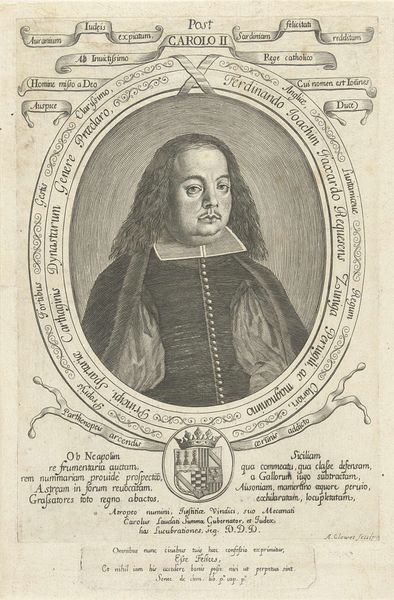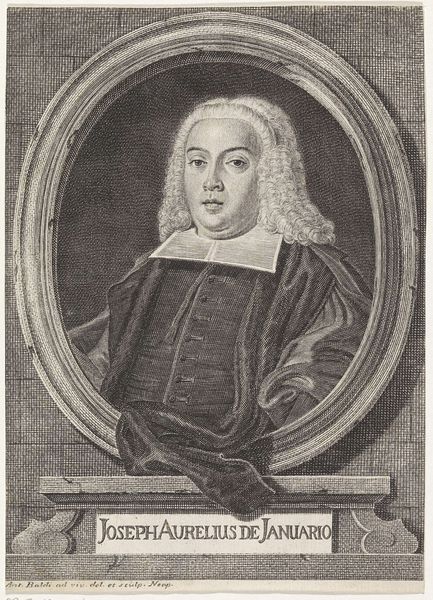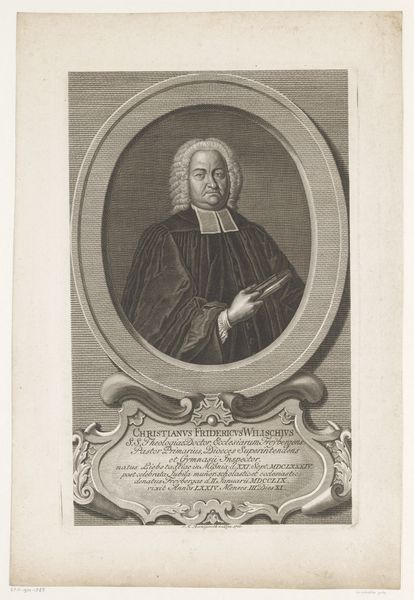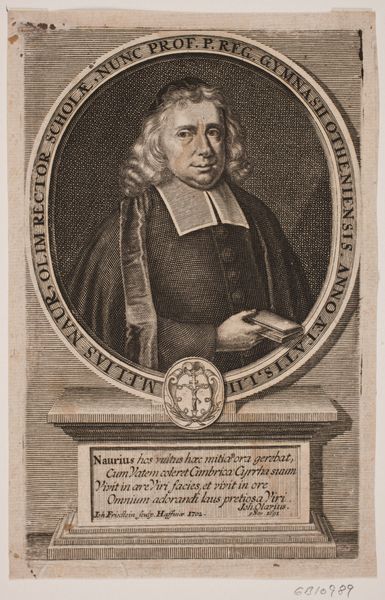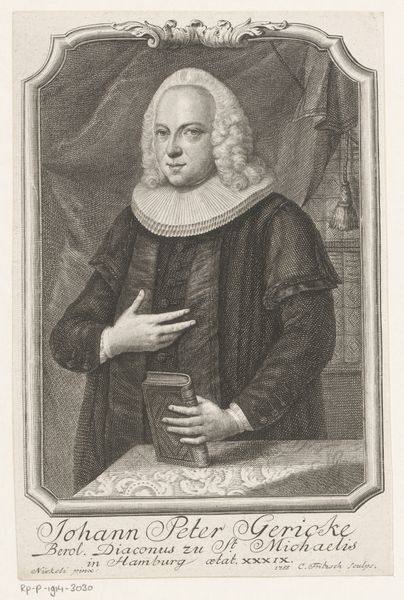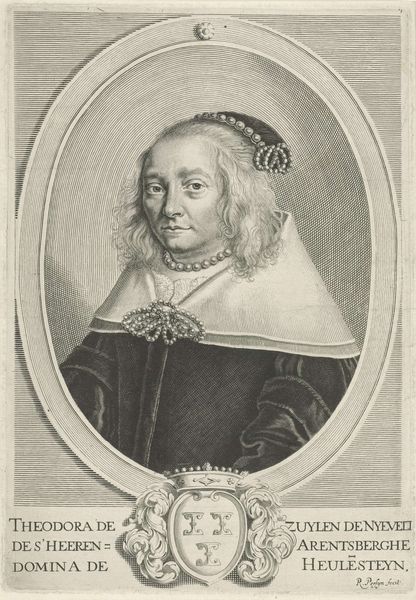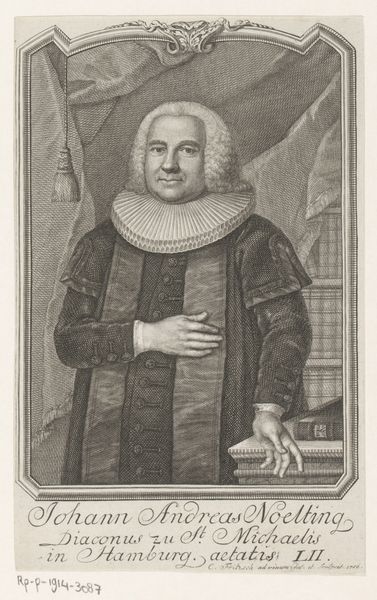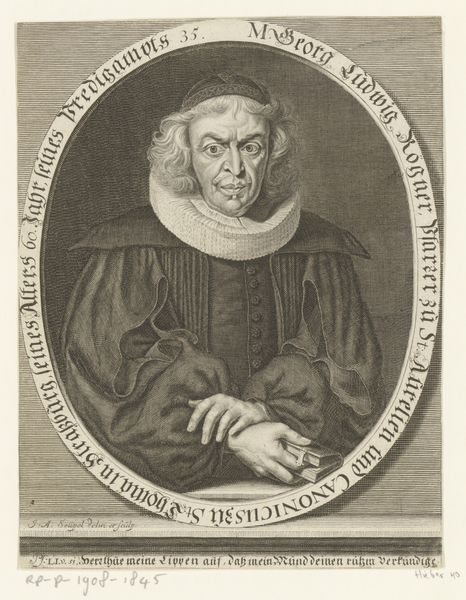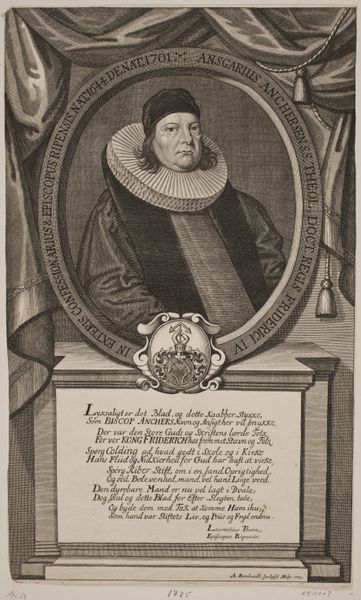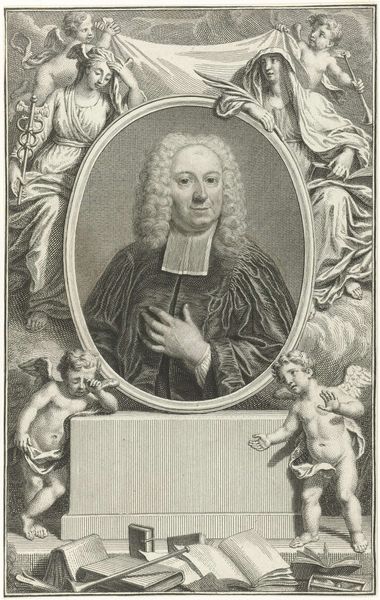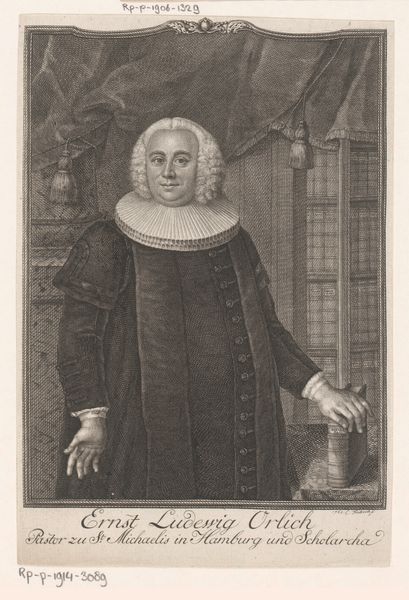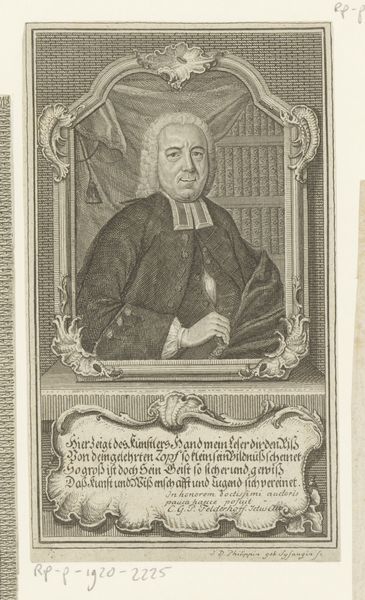
print, engraving
#
portrait
#
baroque
# print
#
old engraving style
#
portrait drawing
#
history-painting
#
engraving
Dimensions: height 199 mm, width 138 mm
Copyright: Rijks Museum: Open Domain
Editor: This is Antonio Baldi's "Portret van Antonio Maggiocco," created sometime between 1702 and 1773, an engraving. There's a formality to it, fitting for a portrait. How do you interpret this work, especially considering the symbols and inscriptions? Curator: I see this print deeply embedded in the patronage networks and institutional structures of its time. The inscription identifies Maggiocco’s role – “Praefectus Reg. Cam.” – likely an important administrator in the royal chambers. Such positions held immense social capital, shaping not only political power, but also artistic production. How does the portrait function to project his authority? Editor: I hadn't considered the "projection of authority." I was just thinking about whether it captured his likeness accurately. Curator: Precisely! That tension – between resemblance and idealized representation – is where we find the politics of imagery at play. Who commissioned this? What was its intended audience? Was this meant for public display or private circulation? The answers to these questions tell us a great deal about Maggiocco’s world. Look at the Baroque style of portraiture. Do you think this print amplified Maggiocco’s social standing, in line with similar portraits of other influential figures of the era? Editor: I think it would, yes. Knowing this engraving’s intention and how it was received adds depth to a simple portrait. Curator: Indeed. It reminds us that art isn’t made in a vacuum; rather, it's intertwined with social forces and institutional agendas. It reshapes how we perceive portraiture in its public and political role.
Comments
No comments
Be the first to comment and join the conversation on the ultimate creative platform.
